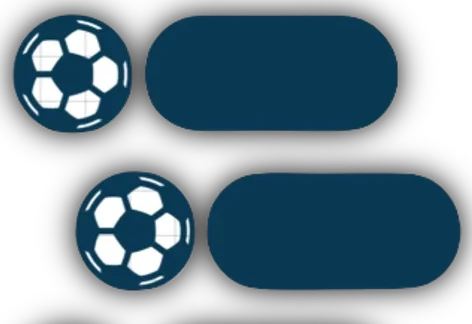
Rachael Gunn, better known as Raygun, is making waves in the world of breakdancing. Despite her recent performance at the Paris 2024 Olympics leaving much to be desired—she didn’t score a single point—Raygun has managed to secure the top spot in global rankings for her sport. This unexpected triumph comes amidst online backlash and confusion surrounding how such rankings are determined. As conversations swirl around fairness, competition integrity, and community spirit within breaking culture, all eyes are on this Australian breaker who embodies resilience in the face of adversity. Let's dive into what led to this remarkable turn of events and explore why Raygun's journey is far more than just numbers on a ranking sheet.
Rachael Gunn, known as Raygun, sits at the top of the breakdancing world rankings. Yet her position is steeped in controversy following a lackluster performance at the Paris Olympics.
Despite not scoring any points during her routines, she remains celebrated globally. Many are puzzled by this anomaly.
The World DanceSport Federation's ranking criteria have drawn criticism. The exclusion of Olympic events from their calculations raises eyebrows and questions legitimacy.
Social media erupted with mixed reactions to Raygun’s standing. Supporters praise her talent and resilience; detractors focus on perceived flaws in the system.
This debate highlights deeper issues within competitive breaking. It reveals a divide between traditional rankings and cultural appreciation among dancers. As discussions unfold, it becomes clear that there’s much more than numbers at play in this vibrant community.
The World DanceSport Federation (WDSF) employs a unique ranking methodology that plays a crucial role in determining athletes' standings. Each competitor's rank is derived from their top four performances within the past year.
However, this system has significant caveats. Notably, it excludes results from Olympic events and qualifying competitions. This decision was made to focus on the athletes’ preparation for the Olympics rather than ranking points during that period.
Additionally, there was no opportunity for point accumulation between December 2023 and the Paris Games due to scheduling constraints. As a result, many breakdancers find themselves ranked based on limited participation in available events.
This approach raises questions about its fairness and accuracy in representing true talent across diverse competitions. The implications of such rules extend beyond individual rankings; they impact how breaking culture evolves globally within the competitive landscape.
The breaking community is buzzing with discontent over the recent rankings. Many feel that Raygun's top position doesn't reflect her true performance level, especially after a disappointing Olympic showing.
Critics argue that the World DanceSport Federation (WDSF) has failed to capture the spirit of breaking. The rankings seem detached from what makes this art form vibrant and alive.
Zack Slusser, a key voice in the community, voiced frustration about how WDSF events lack cultural significance. Instead of fostering excitement, they resemble mere competitions stripped of soul.
Breakers prefer international festivals like Red Bull BC One where energy flows freely and creativity shines through. These settings celebrate not just skill but also community bonds and shared experiences—elements absent in many formalized ranking systems.
When comparing Raygun's experience at the Paris Olympics to other international breaking competitions, a stark contrast emerges. Events like the Red Bull BC One are celebrated for their vibrant atmosphere and community spirit. These competitions prioritize cultural authenticity over rigid scoring systems.
In these dynamic settings, breakers showcase their skills amid cheers and support from fellow dancers. The focus isn't solely on points but rather on artistry and expression. Participants engage not just as competitors but as part of a larger family.
On the other hand, events governed by frameworks like that of the WDSF often feel more sterile. They lack the energy that defines true breaking culture. Dancers perform under pressure with little room for creativity or personal flair, which can leave many feeling disconnected from what drew them into this art form in the first p
The future of breakdancing rankings is poised for transformation. With the Breaking for Gold World Series set to kick off in Shanghai this October, anticipation is building among athletes and fans alike. This event promises a broader platform for breakers to showcase their talents.
As more competitions are added, the methodology behind rankings may evolve. The sport's governing body has acknowledged that current standings do not adequately reflect an athlete's true capabilities due to unusual scheduling constraints.
With fresh opportunities on the horizon, participants hope these events will emphasize cultural celebration over strict point accumulation. Breakers desire experiences that resonate with their community ethos rather than just numerical values tied to performance.
New ranking systems could emerge as international contests gain traction, allowing for a more comprehensive picture of talent within breaking culture. Excitement mounts as athletes prepare to reclaim their narratives through competitive expression once again.
Breakdancing is more than just a sport; it’s a vibrant cultural expression. Rachael Gunn, or Raygun, has become an emblem of this dynamic world, showcasing both talent and resilience despite the challenges she faced during her Olympic performance.
The controversy surrounding rankings highlights the complexities within competitive breaking. While official standings are essential for recognition, they often fail to capture the heart of what makes breakdancing special—the community spirit and cultural significance behind each move.
Events like Red Bull BC One celebrate not only skill but also camaraderie among dancers. They foster connections that transcend competition. Community-oriented competitions have potential to resonate more with breakers, affirming their identities beyond mere points on a scoreboard.
As we look ahead, it's crucial for governing bodies to consider how they can better represent the culture of breaking while acknowledging its roots. The future rankings will likely evolve as new events unfold, hopefully reflecting a broader understanding of what breaking truly represents: artistry intertwined with community spirit.

